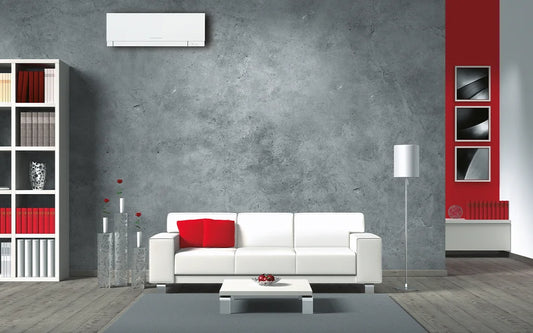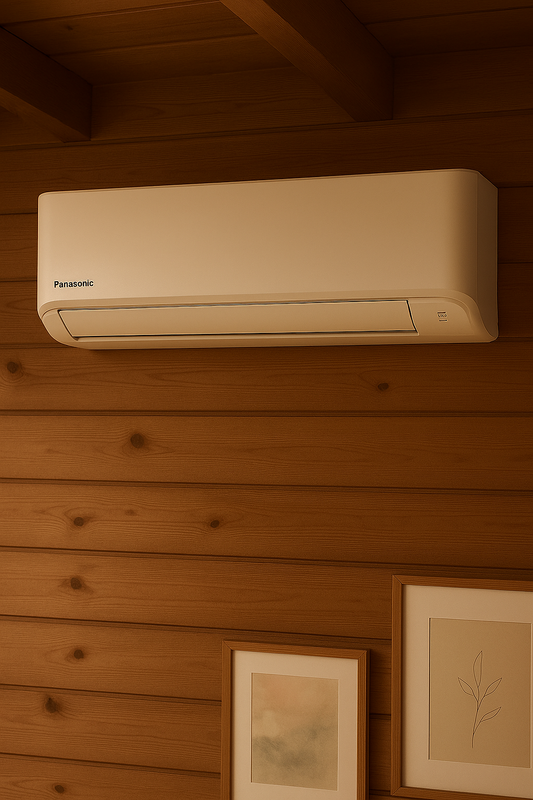Installera värmepump
Inledning
Att installera en värmepump är ett effektivt sätt att reglera temperaturen i hemmet samtidigt som det minskar energiförbrukningen. I denna artikel kommer vi att gå igenom processen för att installera en värmepump, dess fördelar, användningsområden samt relaterade tekniker och vanliga frågor.
Definition och bakgrund
En värmepump är en enhet som använder sig av komprimering och expansion av gaser för att överföra värme från en plats till en annan. Genom att utnyttja värmeenergi från luft, vatten eller mark kan en värmepump användas för att värma upp eller kyla ner ett område, beroende på inställningen. Värmepumpar är energieffektiva och miljövänliga alternativ till traditionella uppvärmnings- och kylsystem.
Fördelar och användningsområden
En av de främsta fördelarna med att installera en värmepump är dess energieffektivitet. Genom att utnyttja befintliga värmeenergikällor kan värmepumpar generera mer värmeenergi än den elektriska energi de förbrukar. Detta resulterar i lägre energikostnader och minskad miljöpåverkan. Värmepumpar kan användas för att värma upp bostäder, kommersiella fastigheter och till och med simbassänger. Dessutom kan de också användas för att kyla ner utrymmen under varma sommardagar.
Relaterade tekniker, begrepp eller variationer
Det finns flera olika typer av värmepumpar, inklusive luft-vatten, luft-luft, mark-vatten och mark-luft värmepumpar. Varje typ har sina egna fördelar och användningsområden beroende på plats och klimat. Dessutom finns det även hybridvärmepumpar som kombinerar olika tekniker för att maximera effektiviteten.
Vanliga frågor (FAQ)
-
Hur mycket kostar det att installera en värmepump?
Kostnaden för att installera en värmepump varierar beroende på storlek, typ och eventuella installationsutmaningar. En vanlig prisram är mellan 40 000 - 100 000 SEK. -
Hur lång tid tar det att installera en värmepump?
Tiden det tar att installera en värmepump beror på flera faktorer inklusive typ av värmepump, plats och eventuella förberedelser som behöver göras. Generellt tar en installation mellan 1-3 dagar. -
Behöver jag underhålla min värmepump regelbundet?
Ja, det är viktigt att regelbundet underhålla din värmepump för att säkerställa dess effektivitet och livslängd. Detta kan inkludera rengöring, filterbyte och eventuell service av certifierade tekniker.
Sammanfattning
Att installera en värmepump är en kostnadseffektiv och miljövänlig metod för att reglera temperaturen i hemmet. Genom att utnyttja befintliga värmeenergikällor kan värmepumpar generera värmeenergi med minimal energiförbrukning. Med olika typer och användningsområden kan värmepumpar anpassas efter specifika behov och klimatförhållanden.
Installation Process
The installation process of a heat pump involves several key steps to ensure its proper functioning. This includes selecting the appropriate location, mounting the unit, connecting the refrigerant lines, electrical wiring, and testing the system for efficiency and performance.
Energy Efficiency Standards
Energy efficiency standards and ratings play a crucial role in the selection and installation of heat pumps. Understanding the energy efficiency ratio (EER) and coefficient of performance (COP) can help homeowners make informed decisions when choosing a heat pump that aligns with their energy-saving goals.
Environmental Impact
One of the significant benefits of heat pump installation is its positive impact on the environment. By utilizing renewable energy sources, such as air and ground heat, heat pumps contribute to reducing carbon emissions and minimizing reliance on non-renewable energy.
Case Study: Residential Heat Pump Installation
In a recent case study, a residential property in a temperate climate opted to install a ground-source heat pump for year-round heating and cooling. The installation resulted in a 40% reduction in energy consumption and a notable decrease in utility costs.
Optimizing Heat Pump Performance
Regular maintenance and optimization techniques are essential to ensure the long-term performance of a heat pump. This includes inspecting and cleaning the outdoor unit, checking refrigerant levels, and scheduling professional tune-ups to maintain optimal efficiency.
Integration with Smart Home Technology
Advancements in smart home technology have facilitated the integration of heat pumps with automated control systems. This allows homeowners to remotely monitor and adjust their heating and cooling settings, further enhancing energy efficiency and convenience.
Conclusion
As the demand for energy-efficient heating and cooling solutions continues to rise, the installation of heat pumps emerges as a sustainable and cost-effective choice for both residential and commercial applications. With ongoing advancements in technology and a focus on environmental responsibility, heat pumps are positioned to play a vital role in the future of sustainable HVAC systems.
Comparing Heat Pump Types
When considering the installation of a heat pump, it's essential to compare the different types available. Each type, such as air-source, ground-source, and ductless mini-split, has distinct characteristics and performance attributes that cater to varying property layouts and climate conditions.
Financial Incentives and Rebates
Many regions offer financial incentives and rebates for installing energy-efficient heating and cooling systems, including heat pumps. Homeowners can explore available programs that provide monetary benefits or tax credits, contributing to a more cost-effective installation process.
Environmental Regulations and Compliance
Understanding the environmental regulations and compliance standards related to heat pump installation is crucial. Compliance with local and national environmental guidelines ensures that the installation process aligns with sustainable practices and contributes to environmental conservation efforts.
Real-Time Monitoring and Performance Analytics
Integrating real-time monitoring and performance analytics into heat pump installations enables users to track energy consumption, system efficiency, and environmental impact. This data-driven approach empowers homeowners and businesses to make informed decisions for optimizing their heating and cooling systems.
Industry Innovations and Emerging Technologies
The heating and cooling industry continually introduces innovations and emerging technologies that enhance the performance and efficiency of heat pumps. Staying informed about these advancements can guide individuals towards state-of-the-art solutions for their properties.
Additional Benefits of Heat Pump Installation
Aside from energy efficiency and environmental impact, heat pump installation offers additional benefits such as consistent temperature control, reduced noise levels, and improved air quality within indoor spaces. These factors contribute to enhanced comfort and well-being for occupants.
Localized Heat Pump Solutions
In specific scenarios, localized heat pump solutions, such as ductless mini-split systems, prove to be advantageous. These systems provide targeted heating and cooling for individual rooms or zones, offering flexibility and personalized climate control.
Seasonal Performance Variations
Understanding the seasonal variations in heat pump performance is essential for maximizing its effectiveness. Factors such as outdoor temperature fluctuations and system defrost cycles impact the overall performance and energy consumption of heat pumps.
Heat Pump Sizing and Capacity Considerations
Proper sizing and capacity considerations are fundamental to the successful installation of a heat pump. A thorough assessment of the property's heating and cooling requirements, along with load calculations, guides the selection of an appropriately sized unit for optimal performance.
Enhanced Comfort Features
Modern heat pump models incorporate enhanced comfort features, including variable-speed compressors, programmable settings, and humidity control. These features contribute to a more customized and efficient heating and cooling experience for users.
Heat Pump Integration in Commercial Settings
Heat pump technology extends beyond residential applications and is increasingly integrated into commercial settings. From office buildings to industrial facilities, the versatility and energy-saving capabilities of heat pumps make them a viable solution for diverse commercial environments.
Geothermal Heat Pump Considerations
Geothermal heat pump installations require specific considerations due to their utilization of ground heat exchange. Factors such as geological surveys, loop configurations, and underground space availability play pivotal roles in the successful implementation of geothermal heat pump systems.
Heat Pump Warranty and Service Agreements
Exploring the warranty coverage and service agreements offered by heat pump manufacturers and installation providers is crucial. Comprehensive warranties and service contracts ensure ongoing support, maintenance, and potential repairs, safeguarding the long-term performance of the installed heat pump.
Heat Pump Retrofitting and Upgrades
Retrofitting existing HVAC systems with heat pump technology and implementing system upgrades present opportunities for enhancing energy efficiency and modernizing heating and cooling infrastructure. These initiatives contribute to sustainable practices and operational cost savings.
Heat Pump Performance Monitoring Tools
The availability of performance monitoring tools and software enables users to track the operational metrics of their heat pump systems. Real-time data visualization and historical analysis empower users to make informed decisions for optimizing energy usage and system performance.


